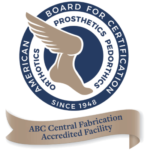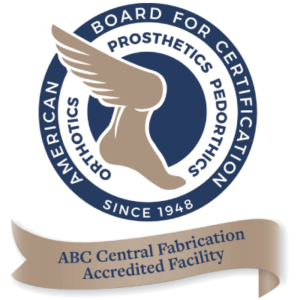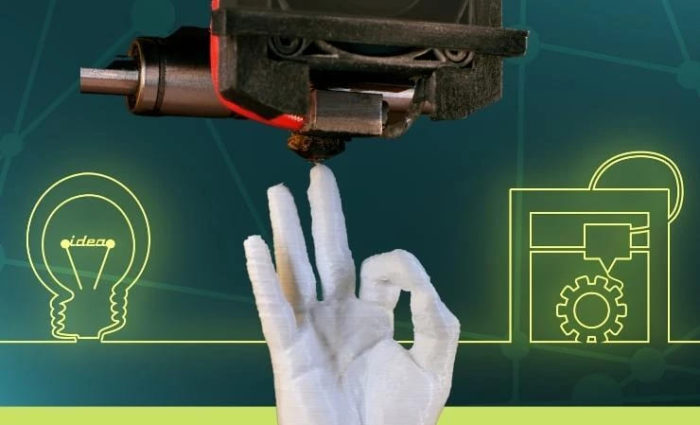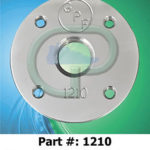3D Printing in Healthcare: How Does 3D Printing Work in Prosthetic and Orthotic Production?

How is 3D printing used in prosthetic and orthotic fabrication.
Thanks to modern technologies, manufacturing processes have evolved significantly. One of the most useful innovations in this space today is 3D printing, which involves creating 3D objects layer by layer from digital models. While this method is used across different industries, it has also become very relevant in the healthcare space—particularly in central fabrication.
One of the major uses of 3D printing in healthcare is orthotic and prosthetic work. When building these devices, it can be challenging to get the fit right—so this is where 3D printing technologies come into the picture. Below, we’ll review why they are useful for planning the creation of such medical devices and how they work.
How Does 3D Printing in Healthcare Work?
3D printing in healthcare has helped professionals provide improved patient care with more personalized treatments and devices. 3D printers have come a long way, contributing to many areas in the field. Some of their most common applications include crafting patient-specific surgical models, scanning, and planning for the development of prostheses and orthoses.
Since 3D printing is an additive manufacturing process, it starts by creating 3D models from digital files and building each layer successively. These files may come from magnetic resonance image (MRI) scans or computer-aided design (CAD) drawings. Since we are working on them digitally, we can easily modify and adapt them to match your patients’ needs and specifications.
Aside from this, advancements in 3D printing technologies have led to quicker lead times, given that you can rapidly copy, improve, and iterate designs. It makes it easy to design and print custom pieces quickly.
3D Printing in Prosthetic and Orthotic Fabrication
3D printing in healthcare has been instrumental in the advancement of prosthetic and orthotic fabrication. Generally, the process works by creating 3D objects of the devices and building them with a layering method.
To start, you first need to take your patients’ measurements manually, through a cast mold or using a 3D scanner. Then you can input these measurements into CAD software to create a digital model of the residual limb.
You can create multiple copies of your model and modify each component before printing, to provide more accuracy and precision. In short, 3D printing can easily be tailored to a specific patients’ anatomy.
Benefits of 3D Printing in Prosthetics and Orthotics
In the past, manufacturing custom products was extremely expensive, and prosthetics and orthotics were only available in a handful of sizes. Patients had to settle for the closest fit, even though they were not necessarily tailored for their measurements. Unfortunately, this meant wearing uncomfortable devices that made it difficult to mimic the movements of real limbs.
Fortunately, 3D printing has revolutionized the way these devices are manufactured, offering benefits like:
Customization
One of the best parts about 3D printing is the design freedom. In traditional manufacturing processes, you have to limit your options to standard designs for mass production. However, with 3D printing, you can modify the digital file make several iterations before manufacturing, making it easy to create custom and complex parts.
With this functionality, you can create custom-fit prosthetics and orthotics that match a patient’s anatomy, allowing for better comfort and adequacy. This is critical in the central fabrication industry since getting the optimal fit can make a difference in how well your patient can use the device.
Flexibility
Conventionally, you could only use standard shapes to manufacture prosthetics and orthotics. However, with 3D printers, you can go beyond traditional design elements to create more complex and irregular shapes. Again, this contributes to more flexibility, allowing you to tailor each part of your model to the patient better.
With regular manufacturing processes, you need to use different tools and molds every time you want to change part of your design. Even then, you had limited options as to how much you could tweak the model. 3D printing is the exact opposite, as you can create more unique designs to fit your patients’ needs. As a plus, you can easily use different materials for each part.
Affordability
Another way 3D printing has transformed orthotic and prosthetic fabrication is affordability. Aside from this, you need not have a storage facility for molds anymore since everything is designed and edited digitally.
At the same time, you can make even the smallest changes and iterations before the device is manufactured. This is much cheaper than the usual process, where a custom mold is needed to fit a specific patient.
Speed
Long lead times can be a huge problem in the healthcare industry. Naturally, you want patients to start using their devices as early as possible to aid in their recovery. Fortunately, 3D printing offers a much shorter turnaround time since all the designs and iterations can be tested digitally.
Of course, it still takes time to procure measurements, scan data, and make edits until your file is ready. However, the process is still faster overall, so you can get your finalized devices to patients after the 3D printing process is completed and the parts are confirmed. With traditional methods, prototypes can take weeks to finish, but you can get them done in a few hours with 3D printing.
Experience Grace’s 3D Printing Technologies Today
3D printing in healthcare ultimately allows you to plan for perfectly-fitting prosthetics and orthotics without breaking the bank. If you are interested in learning more about 3D-printed technology used at Grace Prosthetic Fabrication, contact our team today.
Contact us today at 1-800-940-5437 to get started. You can schedule an online consultation with our team to discuss your patients’ specific needs.






